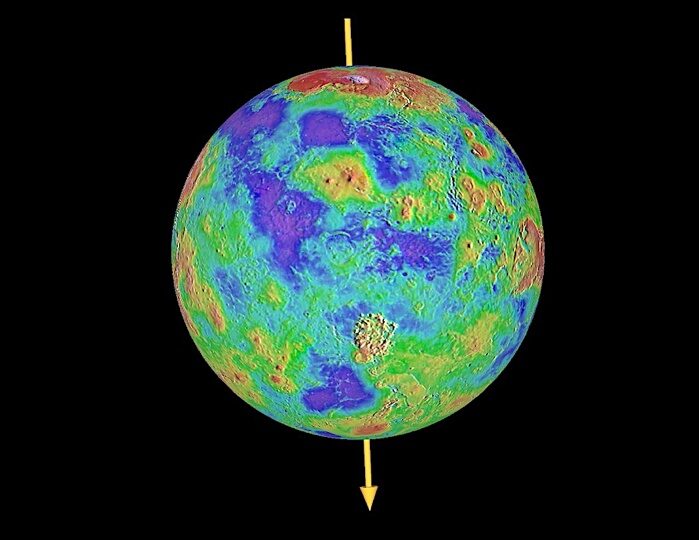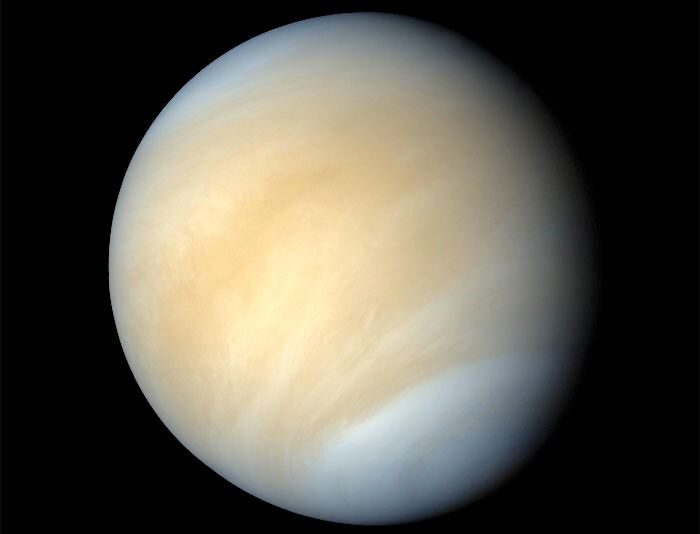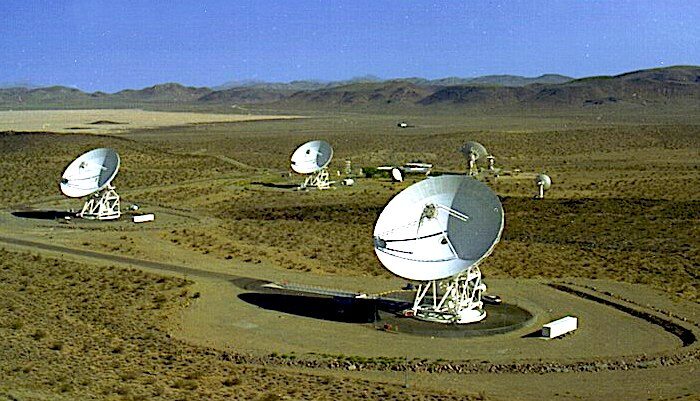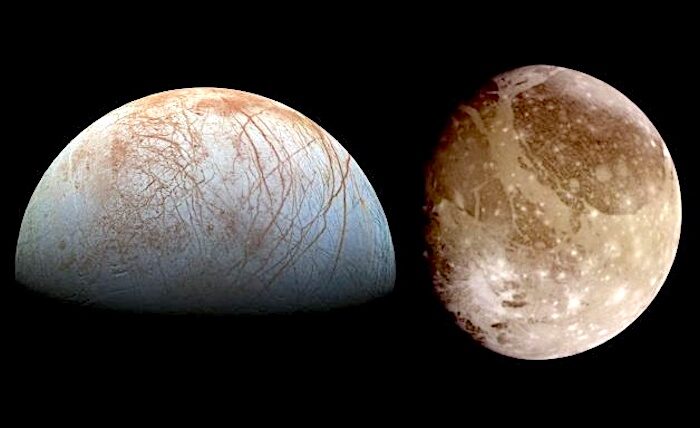And so the mysteries of Venus have endured, not the least of which has to do with some of its most basic characteristics - like its internal mass distribution and variations in the length of a day. Thanks to observations conducted by a team led from UCLA, who repeatedly bounced radar off the planet's surface for the past 15 years, scientists now know the precise length of a day on Venus, the tilt of its axis, and the size of its core.
The team's study, titled "Spin state and moment of inertia of Venus," recently appeared in the journal Nature Astronomy. The team was led by Jean-Luc Margot, a Professor of Earth and planetary sciences and astrophysics at UCLA. He was joined by researchers from Cornell University, NASA's Jet Propulsion Laboratory (JPL), and the National Radio Astronomy Observatory's (NRAO) Green Bank Observatory.

To recap, Venus and Earth are appropriately considered siblings, seeing as how they are similar in size, composition, mass, and density. In spite of that, the separate evolutionary paths they have followed have resulted in widely different outcomes. Whereas Earth has an atmosphere that can maintain temperatures conducive to life, Venus has a super-dense atmosphere that is toxic and hot enough to melt lead!
In order to understand why and how our two planets had such divergent histories, scientists need to know the fundamentals - like how many hours there are in a Venusian day. Knowing this can yield valuable information about a planet's spin, orientation, internal structure, and mass distribution. Having precise measurements for these characteristics will ultimately shed light on the formation and volcanic history of the planet, as well as how its surface evolved over time.
Precise data is also crucial to planning missions to the surface since a planet's rotation can throw off landing attempts by as much as 30 km (~18.5 mi). "Venus is our sister planet, and yet these fundamental properties have remained unknown," said Margot in a UCLA Newsroom release. "Without these measurements, we're essentially flying blind."
To obtain accurate estimates on Venus' rotation, Margot and his colleagues used the 70-meter (230 ft) radio antenna at the Goldstone Deep Space Communications Complex, which is located in the Mojave Desert and is part of NASA's Deep Space Network (DSN). Between 2006 and 2020, the team conducted 21 separate measurements of Venus's surface by bouncing radio signals off Venus' surface that were then received by Goldstone and Green Bank.
As Margot explained, the process is similar to shining a light (the radio dish) on millions of tiny reflectors (the planet's landscape) and measuring the reflections to get a sense of how fast its moving:
"We use Venus as a giant disco ball. We illuminate it with an extremely powerful flashlight — about 100,000 times brighter than your typical flashlight. And if we track the reflections from the disco ball, we can infer properties about the spin [state]."The complex way Venus reflects the radio signals causes them to erratically brighten and dim before they are received back on Earth. The Goldstone antenna intercepts the return signal first, followed by the Green Bank antenna about 20 seconds later. The exact timing of the delay allows scientists to know how quickly Venus is spinning while the particular window of time in which the echoes are most similar allows them to gauge the planet's axial tilt.
What they found was rather interesting. For starters, they found that an average day on Venus lasts 243.022 Earth days - the equivalent of about two-thirds of a year on Earth. What's more, the results showed that Venus' rate of rotation appears to be changing all the time. This was indicated in how each individual radar measurement would be smaller or larger than a previous one, and by a difference of at least 20 minutes per measurement.
These variations, which are probably what led to previous estimates being inconsistent, are likely the result of Venus' heavy atmosphere. As it rotates around the planet, it is likely to exchange a lot of momentum with the surface, causing its rotation to speed up and slow down. The same phenomenon happens on Earth, but the lower density of our atmosphere means that there is only a difference of a millisecond per day.
Margot and his colleagues also obtained far more precise measurements of Venus' axial tilt, which is tilted at 2.6392 degrees (compared to Earth's 23 degree-tilt). Their measurements improve over previous measurements by a factor of 10 and also revealed the rate at which the orientation of Venus' axis changes over time. On Earth, the precession of our axial tilt takes about 26,000 years to complete a single cycle, while Venus' takes about 29,000 years.
What's more, these precise measurements allowed the team to measure Venus' core and determine that it is about 3,500 km (2,175 mi) in diameter. This is similar to Earth's, which is an estimated 3,485 km (2,165 mi) in diameter, though they cannot say whether it's liquid or solid just yet. Earth's magnetic field is the result of a dynamo effect created by Earth's molten outer core rotating about its solid inner core.
For this reason, knowing the state of Venus' core is vital to understanding if the absence of a global magnetic field contributed to Venus' evolution. Obtaining accurate measurements with this method presents many challenges, not the least of which is the exceptional timing it takes to ensure that Venus and Earth are properly positioned.
At the same time, both observatories have to be working perfectly to ensure that they intercept the return signals reliably. "We found that it's actually challenging to get everything to work just right in a 30-second period," said Margot. "Most of the time, we get some data. But it's unusual that we get all the data that we're hoping to get."
Despite the challenges, Margot and his colleagues plan to continue studying Venus using this radio-echo technique. With each signal that is bounced back from its surface, researchers are able to learn a bit more about its surface, formation, and complicated history. This knowledge will not only allow us to crack the mystery of our "Sister Planet," but greatly improve our understanding of how habitable planets can transition to veritable hellholes!
Similarly, Margot and his team hope to use this same method to study Jupiter's moons Europa and Ganymede. For decades, astronomers have strongly suspected that these moons contain vast warm water oceans in their interior (particularly Europa). Ground-based radar measurements of these moons are expected to fortify the case for interior oceans and reveal how thick their icy shells are - both of which will inform future missions to search for life there.
This research was conducted with support provided by NASA JPL and the National Science Foundation (NSF).






The surface of Venus is hotter than the atmosphere. The planet is heating the atmosphere not the other way around.
You would think that someone at NASA would have noticed this anomaly.